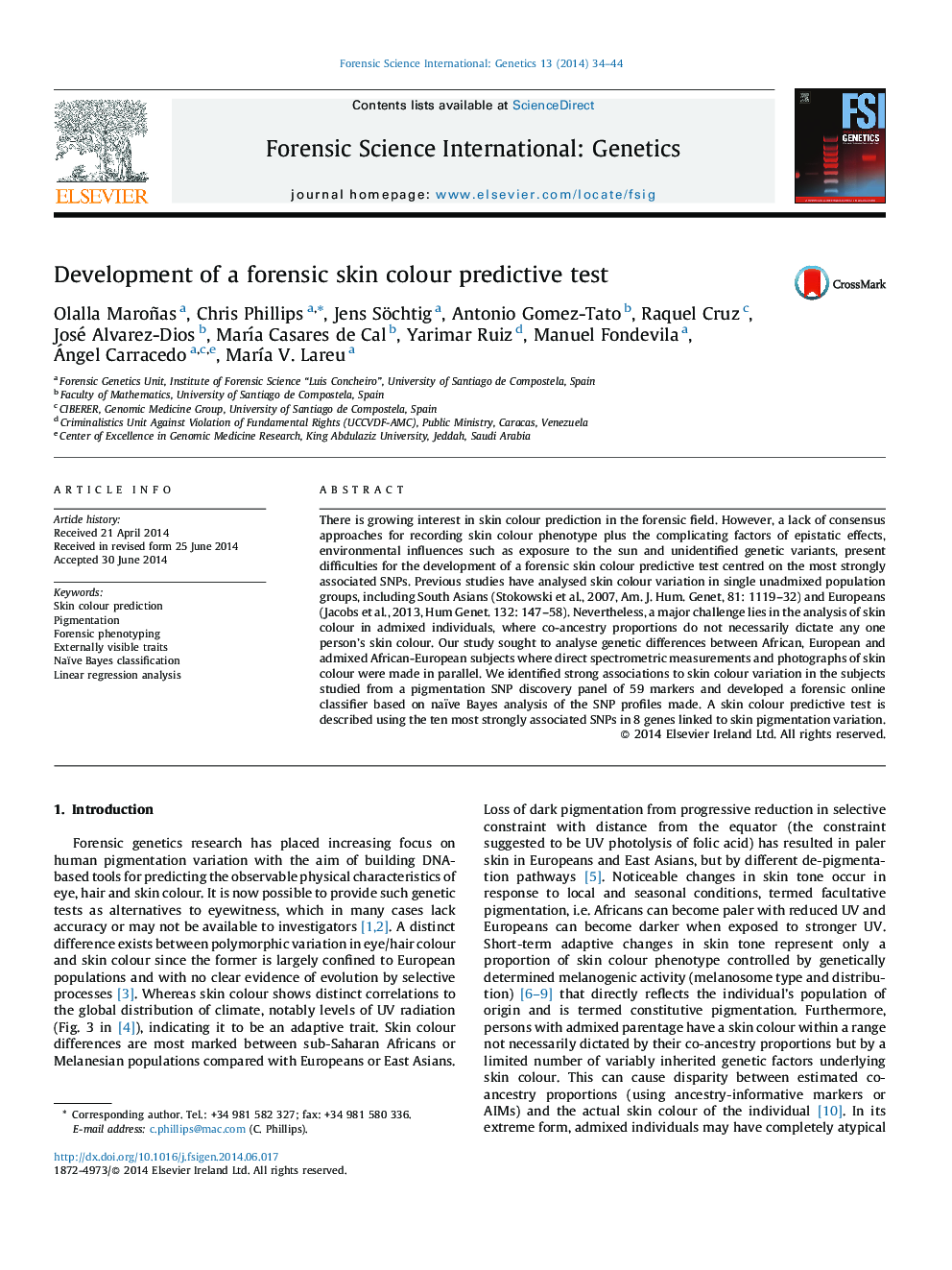| Article ID | Journal | Published Year | Pages | File Type |
|---|---|---|---|---|
| 6553922 | Forensic Science International: Genetics | 2014 | 11 Pages |
Abstract
There is growing interest in skin colour prediction in the forensic field. However, a lack of consensus approaches for recording skin colour phenotype plus the complicating factors of epistatic effects, environmental influences such as exposure to the sun and unidentified genetic variants, present difficulties for the development of a forensic skin colour predictive test centred on the most strongly associated SNPs. Previous studies have analysed skin colour variation in single unadmixed population groups, including South Asians (Stokowski et al., 2007, Am. J. Hum. Genet, 81: 1119-32) and Europeans (Jacobs et al., 2013, Hum Genet. 132: 147-58). Nevertheless, a major challenge lies in the analysis of skin colour in admixed individuals, where co-ancestry proportions do not necessarily dictate any one person's skin colour. Our study sought to analyse genetic differences between African, European and admixed African-European subjects where direct spectrometric measurements and photographs of skin colour were made in parallel. We identified strong associations to skin colour variation in the subjects studied from a pigmentation SNP discovery panel of 59 markers and developed a forensic online classifier based on naïve Bayes analysis of the SNP profiles made. A skin colour predictive test is described using the ten most strongly associated SNPs in 8 genes linked to skin pigmentation variation.
Related Topics
Life Sciences
Biochemistry, Genetics and Molecular Biology
Genetics
Authors
Olalla Maroñas, Chris Phillips, Jens Söchtig, Antonio Gomez-Tato, Raquel Cruz, José Alvarez-Dios, MarÃa Casares de Cal, Yarimar Ruiz, Manuel Fondevila, Ángel Carracedo, MarÃa V. Lareu,
